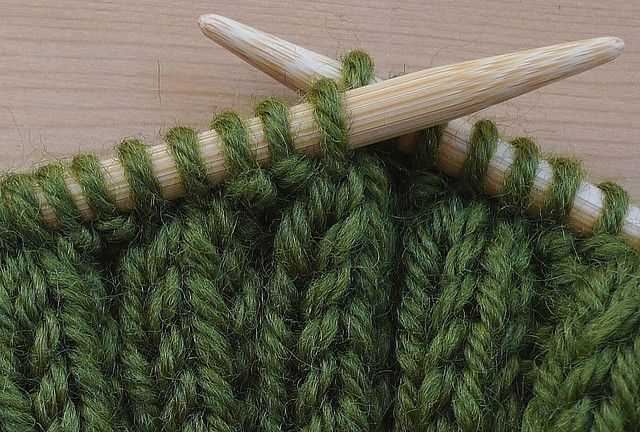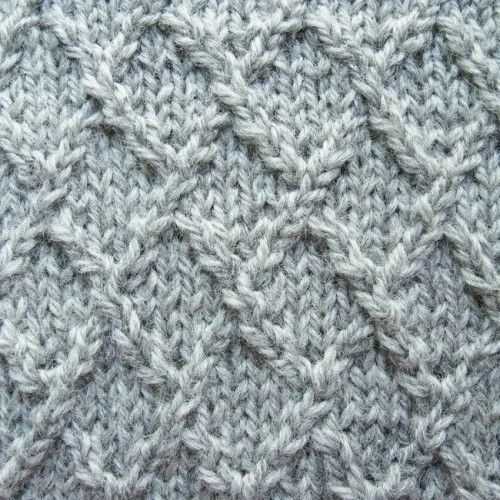Rib knit fabric is a popular choice for many clothing items, including t-shirts, sweaters, and socks. It is known for its unique texture and stretchy nature, which makes it a versatile option for various types of garments. This complete guide aims to provide you with a comprehensive understanding of rib knit fabric, its characteristics, uses, and care instructions.
Rib knit fabric is characterized by its distinctive ribbing pattern, which consists of raised vertical lines alternating with recessed lines. This pattern creates a stretchy fabric that is perfect for body-hugging garments. The ribs in the fabric allow it to expand and contract, making it highly comfortable to wear and providing an excellent fit.
There are different variations of rib knit fabric, including 1×1 rib, 2×2 rib, and 3×3 rib. The numbers refer to the ratio of knit and purl stitches in each row. For example, in a 1×1 rib, there is one knit stitch and one purl stitch in each row, whereas in a 2×2 rib, there are two knit stitches and two purl stitches. Each variation of rib knit fabric creates a different texture and level of stretchiness.
Rib knit fabric is commonly made from natural fibers such as cotton, wool, or bamboo. However, it can also be made from synthetic fibers like polyester or nylon. The choice of fiber can affect the fabric’s properties, such as its durability, softness, and breathability. Additionally, rib knit fabric can come in various weights, ranging from lightweight for summer garments to heavyweight for winter wear.
An Overview of Rib Knit Construction
Rib knit fabric is a unique type of knit fabric that is characterized by its distinctive ribbed construction. This fabric is commonly used for various types of clothing, such as T-shirts, sweaters, and socks. Understanding the construction of rib knit fabric is important for anyone interested in working with or wearing this type of fabric.
Rib knit fabric is created through a specific knitting technique that alternates between knit and purl stitches. These alternating stitches create raised vertical lines, known as ribs, that give the fabric its signature look. The number of knit and purl stitches used in each row can vary, resulting in different types of rib knit fabric.
There are two main types of rib knit construction: 1×1 rib and 2×2 rib. The numbers refer to the ratio of knit stitches to purl stitches in each row. In 1×1 rib, there is one knit stitch followed by one purl stitch, creating a tight and stretchy fabric. In 2×2 rib, there are two knit stitches followed by two purl stitches, resulting in a slightly looser and more textured fabric.
Rib knit fabric is known for its excellent stretch and recovery properties. The ribbed construction allows the fabric to stretch in both width and length, making it an ideal choice for garments that require a snug and comfortable fit. Additionally, the fabric has good shape retention, meaning it will maintain its shape and structure even after extended wear.
One of the key advantages of rib knit fabric is its versatility. Due to its stretch and recovery properties, rib knit fabric can easily adapt to different body shapes and movements. This makes it a popular choice for activewear, as well as for garments that require stretch, such as waistbands, cuffs, and collars.
In terms of care and maintenance, rib knit fabric is generally easy to care for. Most rib knit fabrics can be machine washed and tumble dried, but it is always best to check the care instructions on the fabric label to ensure proper care. It is also advisable to avoid using too high of a heat setting when ironing rib knit fabric, as this can cause the ribs to flatten or distort.
In summary, rib knit fabric is a versatile and comfortable type of knit fabric that is commonly used for various types of clothing. Its ribbed construction provides excellent stretch and recovery properties, making it ideal for garments that require a snug and flexible fit. Understanding the construction and characteristics of rib knit fabric can help consumers and designers make informed choices when working with or wearing this fabric.
Different Types of Rib Knit
Rib knit fabric is available in different variations, each with its own unique characteristics and uses. Here are some of the most common types of rib knit:
-
1×1 Rib Knit: This is the most basic type of rib knit, consisting of alternating vertical columns of knit stitches and purl stitches. It has a lot of stretch and is commonly used for cuffs, collars, and waistbands.
-
2×2 Rib Knit: This type of rib knit consists of two knit stitches followed by two purl stitches, creating a pattern of alternating ribs. It has good stretch and is often used for sweater cuffs, necklines, and hems.
-
3×3 Rib Knit: Similar to the 2×2 rib knit, this type features three knit stitches followed by three purl stitches. It offers more texture and is commonly used for heavier garments such as jackets and cardigans.
-
Flat Rib Knit: Also known as flat ribbing or single rib knit, this type has narrower vertical ribs compared to the other variations. It is often used for lightweight garments and can create a more subtle ribbed texture.
-
Mock Rib Knit: This type of rib knit is created by alternating different types of stitches, such as knit stitches and twisted stitches. It mimics the look of traditional rib knit but with a unique twist.
These are just a few examples of the many types of rib knit fabric available. Each type offers its own distinct look and feel, allowing for endless possibilities in garment design and construction.
Benefits of Rib Knit Fabric
Rib knit fabric is a popular choice for various clothing items and accessories due to its unique characteristics and benefits. Here are some of the main advantages of using rib knit fabric:
- Elasticity and Stretch: Rib knit fabric is known for its excellent stretch and recovery properties. This allows the fabric to conform to the body’s shape and provide a comfortable and flexible fit. Whether it’s a form-fitting garment or an accessory like a hat or scarf, rib knit fabric ensures a snug fit while offering ease of movement.
- Warmth: The rib structure of this fabric helps to create small air pockets, which provide insulation and trap heat. As a result, rib knit fabric is a great choice for garments that require warmth, such as sweaters, cardigans, and winter accessories.
- Durability: The construction of rib knit fabric lends itself to greater durability compared to other fabric types. The interlocking pattern of vertical ridges and horizontal rows enhances the fabric’s strength, making it resistant to tearing and ripping. This durability ensures that clothing items made from rib knit fabric can withstand regular wear and washing.
- Breathability: Despite its warmth, rib knit fabric also offers breathability. The rib structure allows for good airflow, preventing excess moisture and heat buildup. This makes it comfortable to wear in various climates and during different seasons.
- Tailoring: Rib knit fabric is versatile and can be easily tailored to create different designs and silhouettes. The stretch and shape retention properties make it suitable for structured garments as well as form-fitting styles. Additionally, it is often used for details like cuffs, collars, and waistbands, adding a touch of visual interest to clothing items.
In summary, rib knit fabric offers elasticity, warmth, durability, breathability, and tailoring possibilities. Combined, these benefits make it a popular choice in the fashion industry for creating comfortable and stylish garments and accessories.
Common Uses for Rib Knit
Rib knit fabric is a versatile material that is commonly used in various applications. Its unique construction makes it a popular choice for a wide range of projects. Here are some common uses for rib knit fabric:
- Apparel: Rib knit fabric is frequently used in the production of clothing items such as t-shirts, sweaters, and dresses. Its stretchy nature and ability to conform to the body make it ideal for creating fitted garments.
- Collars and Cuffs: Rib knit fabric is often used for the construction of collars and cuffs on garments. Its elasticity helps these elements maintain their shape and provides a comfortable fit.
- Trimming: Rib knit fabric can be used as a decorative trimming on various items, including jackets, hats, and bags. Its textured appearance adds visual interest to the design.
- Undergarments: Rib knit fabric is commonly used in the production of undergarments such as underwear and bras. Its stretchiness and softness make it suitable for creating comfortable and supportive pieces.
In addition to these common uses, rib knit fabric can also be employed in the production of accessories like scarves and headbands, as well as for various crafting projects. Its versatility and durability make it a preferred choice for many different applications.
How to Care for Rib Knit Fabric
Rib knit fabric is a versatile and popular fabric choice for a variety of garments. Whether you have a rib knit sweater, a rib knit scarf, or a rib knit dress, proper care is essential to maintain its quality and longevity.
1. Read the Care Label
Before you start cleaning your rib knit fabric, always check the care label attached to the garment. The care label provides specific instructions on how to properly care for the fabric, including washing, drying, and ironing recommendations.
2. Hand Wash or Machine Wash on Delicate Cycle
For most rib knit fabrics, hand washing is the safest option to prevent any stretching or damage. Fill a basin with lukewarm water and a mild detergent. Gently agitate the fabric in the soapy water, then rinse thoroughly with clean water. Avoid wringing or twisting the fabric, as this can cause stretching.
If you choose to machine wash, always use a delicate or gentle cycle with cold water and a mild detergent. Place the rib knit garment in a mesh laundry bag to protect it from rubbing against other clothes or snagging on the machine’s agitator.
3. Air Dry or Lay Flat to Dry
After washing, avoid using the dryer to prevent excessive shrinkage or stretching of the rib knit fabric. Instead, gently squeeze out excess water by rolling the garment in a clean towel. Then, reshape the fabric and lay it flat on a clean towel or drying rack to air dry. Avoid hanging rib knit garments to dry, as this can cause stretching or distortion.
4. Avoid Direct Sunlight and Heat
When drying or storing rib knit fabric, keep it away from direct sunlight and heat sources, such as radiators or heaters. Prolonged exposure to these elements can cause fading, discoloration, and damage to the fabric fibers.
5. Iron on Low Heat or Use a Steamer
If your rib knit fabric requires ironing to remove wrinkles, use a low heat setting on your iron or a garment steamer. Avoid applying too much pressure or leaving the iron in one spot for too long, as this can flatten the ribs and create unwanted creases.
6. Store Properly
When storing rib knit garments, fold them neatly and place them in a clean, dry space. Avoid hanging them for long periods, as this can cause stretching. If possible, place a sheet of acid-free tissue paper between folds to help maintain the fabric’s shape and prevent creasing.
By following these care tips, you can ensure that your rib knit fabric garments remain in excellent condition and last for years to come.
Tips for Working with Rib Knit
- Pre-wash the fabric: Before starting any sewing project with rib knit fabric, it is important to pre-wash the fabric to prevent any shrinkage or distortion in the final garment.
- Use the correct needle and thread: When working with rib knit fabric, use a ballpoint or stretch needle to avoid damaging the fabric. Also, use a polyester or nylon thread that has some level of stretch to prevent breakage.
- Stabilize the shoulders: Since rib knit fabric tends to stretch, it is important to stabilize the shoulder seams. Use lightweight fusible interfacing or stay tape to reinforce the shoulder area and prevent stretching over time.
- Use a walking foot: A walking foot can be helpful when sewing rib knit fabric, as it helps to evenly feed the fabric through the machine and prevents stretching or shifting while sewing.
- Stretch as you sew: When sewing rib knit fabric, gently stretch the fabric as you sew. This helps to maintain the stretch and recovery of the fabric, resulting in a professional-looking finish.
- Select the appropriate stitches: Use a stretch stitch, such as a zigzag stitch or a serger, to sew seams in rib knit fabric. These stitches allow for stretch and prevent popped stitches when the garment is worn.
- Finish the edges: To prevent the edges of rib knit fabric from curling or fraying, consider using a coverstitch or a twin needle to create a professional hem or finish. Alternatively, you can also use a serger to finish the raw edges.
- Press carefully: When pressing rib knit fabric, use a low heat setting and press gently. Avoid applying too much pressure or stretching the fabric, as it can cause distortion or damage.
- Test on a scrap fabric: Before starting a project with rib knit fabric, it is always a good idea to test stitches, tension, and techniques on a scrap piece of fabric to ensure desirable results.
FAQ:
What is rib knit fabric?
Rib knit fabric is a type of knitted fabric that has vertical ridges running along the fabric. It has excellent stretch and recovery, making it ideal for use in cuffs, collars, and waistbands.
What are the characteristics of rib knit fabric?
Rib knit fabric has a textured appearance due to the vertical ridges. It is stretchy and has excellent recovery, meaning it will retain its shape after stretching. It is also durable and can withstand regular wear and washing.
What are the different types of rib knit fabrics?
There are two main types of rib knit fabrics: single rib and double rib. Single rib has one ridge and one valley, while double rib has two ridges and two valleys.
What are the common uses of rib knit fabric?
Rib knit fabric is commonly used for cuffs, collars, and waistbands in clothing. It can also be used for t-shirts, dresses, sweaters, and other garments that require stretch and structure.
How should rib knit fabric be cared for?
Rib knit fabric can be machine washed in cold or warm water and tumble dried on low heat. However, to prolong its lifespan, it is recommended to wash it on a gentle cycle and line dry it.


